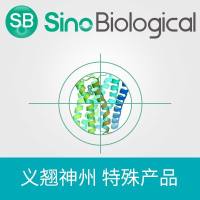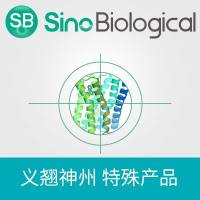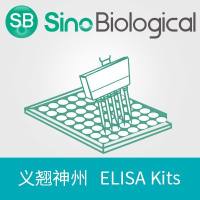ELISPOT (Enzyme-linked ImmunoSPOT)
互联网
Introduction
Enzyme-linked immunosorbent spot (ELISPOT) assays were originally developed to enumerate B cells secreting antigen-specific antibodies, but subsequently the assay has been adapted for identification and enumeration of cytokine-producing cells at the single cell level. The method employs the sandwich assay approach of the enzyme-linked immunosorbent assay (ELISA), with some variations. The ELISPOT capture antibody is coated aseptically onto a polyvinylidene difluoride (PVDF)-backed microwell plate. The plate is blocked with serum proteins, cells of interest are plated out at varying densities, along with antigen or mitogen, and plates are incubated at 37°C. Cytokine secreted by activated cells is captured locally by the coated antibody on the high surface area PVDF membrane. The wells are washed to remove cells, debris, and media components. A second antibody (biotinylated) reactive with a distinct epitope of the target cytokine is employed to detect the captured cytokine. The detected cytokine is then visualized using avidin-HRP, and a precipitating substrate (e.g., AEC). The colored end product (spot) represents an individual cytokine-producing cell. The spots can be counted manually (e.g., with a dissecting microscope) or using an automated reader to capture the microwell images and to analyze spot number and size.
The ELISPOT assay enables analysis of activated or responding cells at the single cell level. By virtue of exquisite sensitivity of the ELISPOT assay, frequency analysis of rare cell populations (e.g., antigen-specific responses) which were not possible by bulk assay methods are now possible. Limits of detection are below 1/100,000 rendering the assay uniquely useful for monitoring antigen-specific responses, applicable to a wide range of areas of immunology research, including cancer, transplantation, infectious disease, and vaccine development.
|
Human IL-17 ELISPOT: Left: Human PBMCs cultured for 24 hrs (no mitogen). Right: Human PBMCs activated with PMA/Ionomycin for 24 hrs |
Human Granzyme B ELISPOT: Left: Human PBMCs without mitogen cultured for 24 hrs. Right: Human PBMCs activated with PMA/Ionomycin for 24 hrs. |
Reference Tables
| Mouse ELISPOT Ready-Set-Go! Sets & Antibody Selection Quick Guide | |||
|---|---|---|---|
| Mouse Cytokine | ELISPOT Set Catalog No. | Capture mAb | Detection mAb |
| IFN-γ | 88-7384 | AN-18 | R4-6A2 |
| IL-1α | 88-7813 | ALF-161 | Rabbit Polyclonal |
| IL-2 | 88-7824 | JES6-1A12 | JES6-5H4 |
| IL-4 | 88-7844 | 11B11 | BVD6-24G2 |
| IL-5 | 88-7825 | TRFK5 | TRFK4 |
| IL-6 | 88-7864 | MP5-20F3 | MP5-32C11 |
| IL-10 | 88-7804 | JES5-16E3 | JES5-2A5 |
| IL-13 | 88-7834 | eBio13A | eBio1316H |
| IL-17A | 88-7370 | eBio17CK15A5 | eBio17B7 |
| TNF-α | 88-7328 | 1F3F3D4 | mAb Cocktail |
| Human ELISPOT Ready-Set-Go! Sets & Antibody Selection Quick Guide | |||
|---|---|---|---|
| Human Cytokine | ELISPOT Set Catalog No. | Capture mAb | Detection mAb |
| Granzyme B | 88-8399 | eBioGrB | eBioGrB2 |
| IFN-γ | 88-7386 | MD-1 | 4S.B3 |
| IL-1β | 88-7810 | CRM56 | CRM57 |
| IL-4 | 88-7849 | 8D4-8 | MP4-25D2 |
| IL-5 | 88-7859 | TRFK5 | JES1-5A10 |
| IL-6 | 88-7869 | MQ2-13A5 | MQ2-39C3 |
| IL-10 | 88-7805 | JES3-9D7 | JES3-12G8 |
| IL-12 p70 | 88-7879 | B-T21 | C8.6 |
| IL-13 | 88-7839 | PVM13-1 | Rabbit Polyclonal |
| IL-17A | 88-7876 | eBio64CAP17 | eBio64DEC17 |
| TNF-α | 88-7398 | MAb1 | MAb11 |
Cytokine ELISPOT Protocol
Description
eBioscience ELISPOT Ready-SET-Go! reagent sets contain the necessary reagents for performing enzyme linked immunosorbent spot (ELISPOT) assays for high resolution frequency analysis of cytokine-secreting cells. These ELISPOT reagent sets are pre-titrated for optimal spot development and convenience.
Stability
eBioscience ELISPOT reagent sets are guaranteed to perform as specified for at least 12 months from date of receipt if stored and handled as specified by the accompanying datasheet and Certificate of Analysis.
Usage
For research use only, not for diagnostic or therapeutic use.
Contents of the ELISPOT Ready-SET-Go! Reagent Set
- Capture Antibody: Pre-titrated, Functional Grade (low endotoxin) purified antibody
- Detection Antibody: Pre-titrated, biotin-conjugated antibody
- ELISA/ELISPOT Coating Buffer Powder (Reconstitute to 1L with dH20 and 0.22 uM filter)
- Assay Diluent: 5X concentrated
- Detection enzyme: pre-titrated Avidin-HRP
- Certificate of Analysis: Lot-specific instructions for dilution of antibodies and enzyme
Other Materials Needed
- 96 Well PVDF Membrane ELISPOT Plates (Millipore, Cat. No. MAIPS4510)
- AEC substrate (Sigma, Cat. No. A-5754)
- Distilled water
- Wash Buffer: 1 x PBS, 0.05% Tween-20 (or eBioscience ELISA Wash Buffer Powder, cat 00-0400)
Instruments
- Pipettes and pipettors
- Refrigerator
- Incubator
- Laminar Flow Hood
- Plate Washer: Wash bottle or automated wash machine
- ELISPOT plate reader or dissecting microscope for visual inspection
Experiment Duration
- 1 overnight antibody incubation
- 1-2 day cell activation
- 3-5 hr washing, antibody incubation, color development
ELISPOT Method
Aseptic Procedures: (Use sterile buffers and aseptic conditions; use laminar flow hood for procedures.)
- Dilute Functional Grade purified capture antibody in sterile ELISPOT Coating Buffer, as noted on Certificate of Analysis which is included with the reagent set. Coat ELISPOT plate with 100µl/well of capture antibody solution. Incubate at 4°C overnight.
- Decant or aspirate coating antibody from plate.
- Wash plates 2 times with 200µl/well sterile ELISPOT Coating Buffer. Decant.
- Block plate with 200µl/well of complete RPMI-1640 at room temperature for 1 hour. Decant or aspirate plate.
- Aliquot mitogen, antigen or controls diluted in complete RPMI-1640 medium to appropriate wells at 100µl/well. Aliquot cells at desired densities (e.g., 1x105 /ml - 2x106 /ml) at 100µl/well and incubate at 37°C, 5% CO2 humidified incubator for 24-48 hours.
Note: Kinetics and cell densities vary with target cytokine, treatment, and cell type and must be empirically determined. See references. Cells can be diluted in a sterile tissue culture plate starting at 2x106 /well in triplicate wells with a series of 1:3 or 1:4 serial dilutions down the plate, and then transferred to the ELISPOT plate.
Non-Aseptic Procedures
- Decant cells and medium from plates. Wash plate 3 times with ELISPOT Wash Buffer.
- Dilute biotinylated detection antibody in Assay Diluent according to instructions on the Certificate of Analysis provided with the reagent set. Add 100µl/well to plate microwells and incubate at room temperature for 2 hrs (or 4°C overnight).
- Decant antibody solution. Wash 4 times with ELISPOT Wash Buffer. Allow wells to soak for 1 minute for each wash.
- Dilute Avidin-horseradish peroxidase reagent in Assay Diluent according to instructions on the Certificate of Analysis provided with the reagent set. Add 100µl/well of AV-HRP and incubate at room temperature for 45 minutes.
- Decant Av-HRP solution. Wash plate 3 times with ELISPOT Wash Buffer, and then 2 times with 1x PBS (no Tween-20).
- Add 100µl/well of freshly-prepared AEC Substrate Solution and develop at room temperature for 10-60 minutes; monitor development of spots.
- Stop the substrate reaction by washing wells 3 times with 200µl/well distilled water.
- Air-dry the plate. Count spots using a dissecting microscope or automated ELISPOT plate reader. Store plates in the dark prior to reading.
Cytokine ELISPOT Buffers
-
ELISA/ELISPOT Coating Buffer Powder
- Reconstitute powder to 1L in dH2 0; sterile filter using 0.22 uM filter
-
Complete RPMI-1640:
- RPMI-1640 with 10% FBS and 1% Pen/Strep/L-Glu
-
Assay Diluent (supplied as 5X):
- Dilute 5X solution to 1X in DI H2 O
-
ELISPOT Wash Buffer:
- 1X PBS with 0.05% Tween-20 (0.5 ml Tween-20 in 1 L PBS) or eBioscience ELISA Wash Buffer Powder (Cat. No. 00-0400 )
-
1X PBS:
- 80.0g NaCl
- 11.6g Na2 HPO2
- 2.0g KH2 PO4
- 2.0g KCl
- Qs with DI H2 0 up to 10.0L, pH to 7.0
-
AEC (3-amino-9-ethyl carbazole) Substrate Solution:
- AEC Stock Solution: Dissolve 100mg of AEC in 10ml of N,N Dimethylformamide (DMF; Pierce, Cat. No. 20672)
- Add 333µl of AEC Stock Solution to 10ml of 0.1 M Acetate Solution (pH 5.0) (see below for recipe). Filter through a 0.45µm filter.
- Just before use, add 5µl of 30% H2 O2 . Mix and use immediately.
-
0.1 M Acetate Solution (pH 5.0):
- Combine 148ml 0.2 M acetic acid (11.55 ml glacial acetic acid per 1L dH2 O) with 352ml 0.2 M sodium acetate (27.2 g sodium acetate per 1L dH2 O).
- Qs to 1L with dH2 O. Adjust pH to 5.0.
Selected References
- Gebauer BS, et al. 2002. Evolution of the enzyme-linked immunosorbent spot assay for post-transplant alloreactivity as a potentially useful immune monitoring tool. Am. J. Transplant. 9: 857-866.
- Guerkov RE, et al. 2003. Detection of low-frequency antigen-specifi c IL-10-producing CD4(+) T cells via ELISPOT in PBMC: cognate vs. nonspecifi c production of the cytokine. J. Immunol. Methods. 279: 111-121.
- Kreher CR, et al. 2003. CD4+ and CD8+ cells in cryopreserved human PBMC maintain full functionality in cytokine ELISPOT assays. J. Immunol. Methods. 278: 79-93.
- Ott PA, et al. 2004. CD28 costimulation enhances the sensitivity of the ELISPOT assay for detection of antigen-specifi c memory effector CD4 and CD8 cell populations in human diseases. J. Immunol. Methods. 285: 223-235.
- Smith JG, et al. 2001. Development and validation of a gamma interferon ELISPOT assay for quantitation of cellular immune responses to varicella-zoster virus. Clin. Diag. Lab. Immunol. 8: 871-879.
- Shafer-Weaver K, et al. 2003. The Granzyme B ELISPOT assay: an alternative to the 51Cr-release assay for monitoring cell-mediated cytotoxicity. J. Translational. Med. 1: 14.
- Rininsland F, et al. 2000. Granzyme B ELISPOT assay for ex vivo measurements of T cell immunity. J. Immunol. Meth. 240:143-155.









